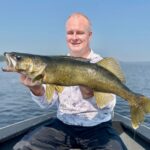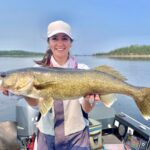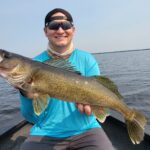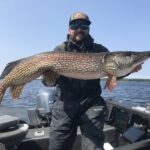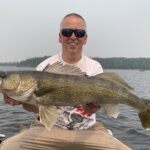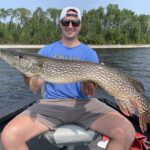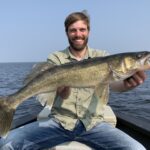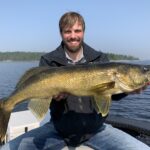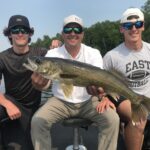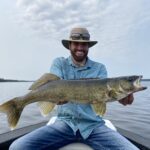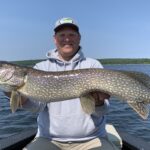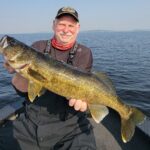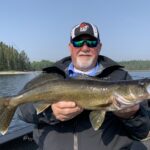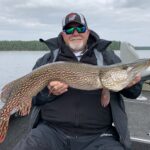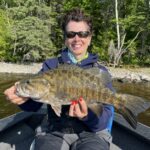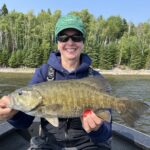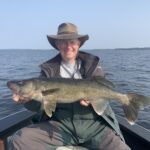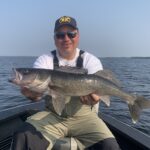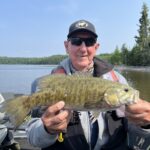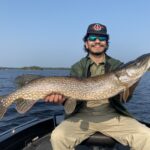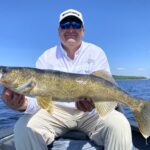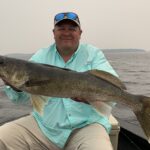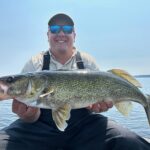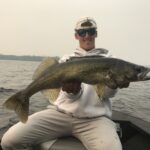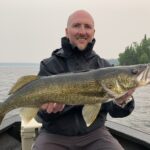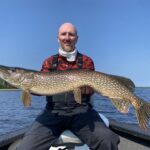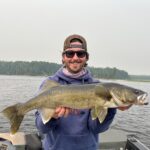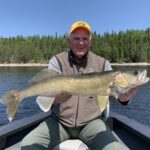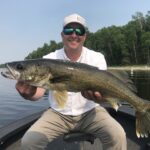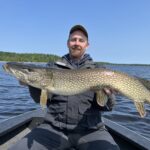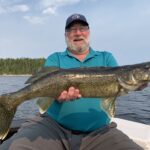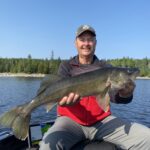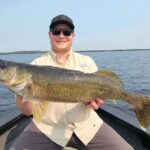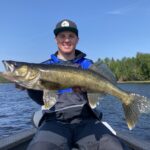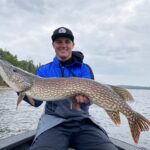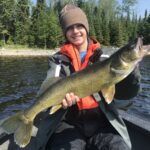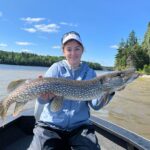Silver Water Wheel Lodge
Lac Seul, Ontario
June 17, 2023
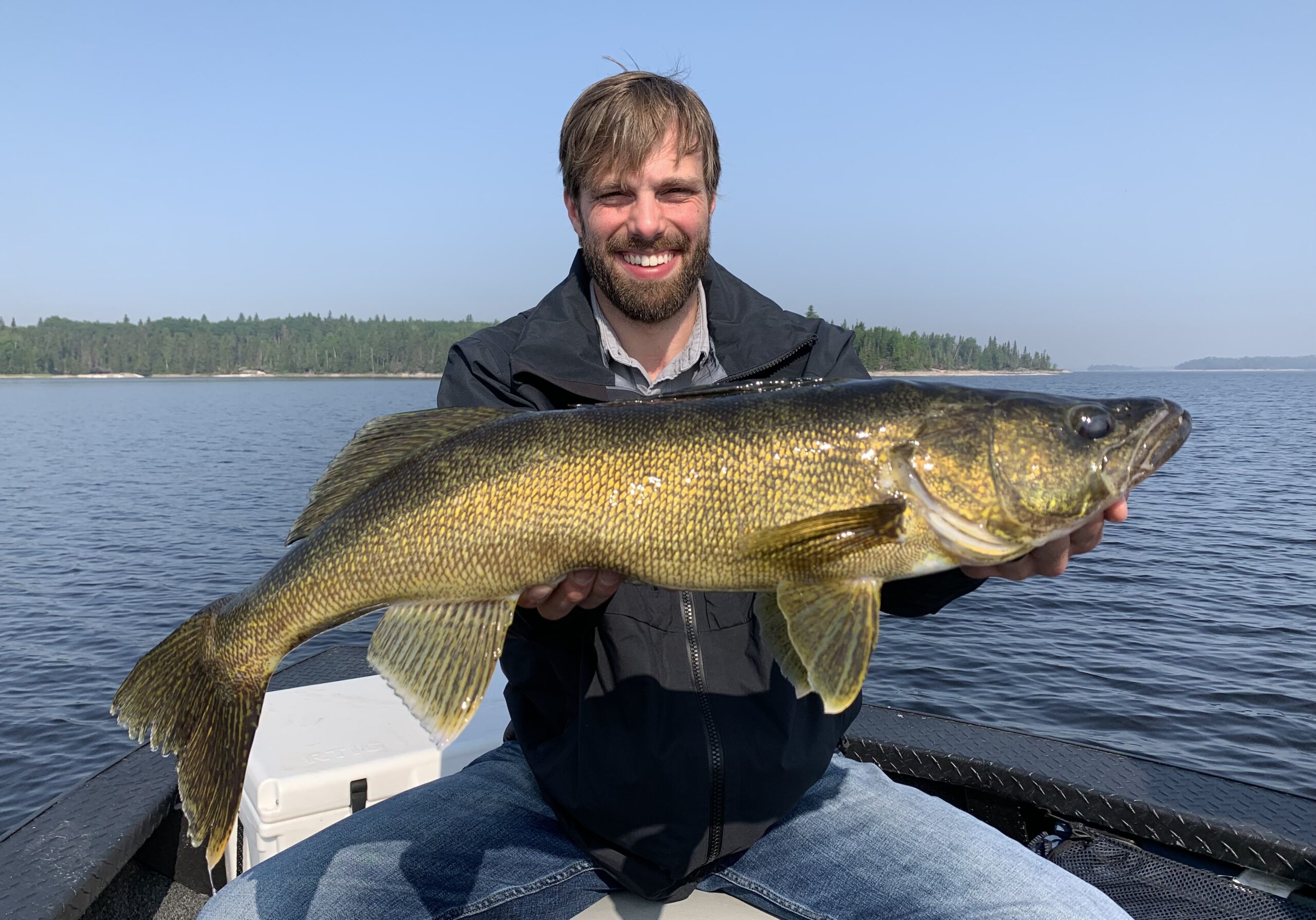
Carleton Goss 28.25
It was a bit of a bonkers week at the Wheel. For those that follow us on a regular basis, you know that it has been hot and dry in Northwest Ontario. The “normal” spring patterns have been disrupted by unseasonably warm weather and we are currently under a fire ban. We saw several fires blow up on the lake this week and watched the MNR fight them with helicopters and water bombers. At the same time, we also had a pretty sharp, dry, cold front come through midweek that definitely scrambled the fishing puzzle pieces. In short, it was complicated, but the guide crew worked together and managed to figure out most of it.
I am going to give you the walleye stats first, but then I am going to add some details.
For the week, we caught and released 74 walleyes over 27 in., including 11 – 28s, 4 – 29s, and 2 – 30s. Volume overall was very good, with guide sheets averaging 40 walleyes over 18 in. per day.
Those numbers sound off the charts and would give the impression that the fishing was easy. It was not. We caught walleyes in 2 ft. of water and 32 ft. of water. We caught walleyes in spring locations and we caught them on main lake summer spots. We caught walleyes that were aggressive enough to eat Williams Whitefish spoons casting for pike and we caught walleyes that were so negative that we had to dead stick 1/8s and minnows or rig drop shots.
Not only that, it was sporadic. One area or region would be hot one day and dead the next. Guides fished an area that was dead in the morning and hot in the afternoon. Even worse, was the localized pocket bites. A generally good fishing area would be mostly vacant, except for a very small area that was holding a concentration of fish. They may have been relating to a specific rock sand transition, newly emergent weed growth, or a gradual depth transition. The point is, if you missed noticing that small detail, then you missed the 12 fish you could have put in the boat.
The big walleye patterns were just as messy. For every 27 in. walleye that we caught out of 8 – 10 ft. in front of an emerging weed bed, we caught 2 or more out of 20 – 25 ft. of water on main lake rock summer spots. Bottom line: walleye fishing was good, but it was hard.
Pike fishing was just as schizophrenic. As the oldest senior guide, I advised my guys to steer guests away from the “difficult transition” pike. Thankfully, they did not take my advice. We had groups that wanted to hunt for big Northerns and my guides did what they are supposed to do. They listened, explained the odds, gave the options, laid out plans, and tried. Their results were far better than I expected. For the week, we caught and released 14 pike over 37 in., including 3 – 38s, 2 – 39s, and 2 – 41s. Spoons were the most productive. Newly emergent weed beds produced many, but there were also quite a few big pike caught casting to rock.
And the bass were a surprise too. At one time, the guide crew were worried that the peak of the bass bite would happen before our guys from Texas arrived. There were several good bass bites last week and there were also several disappointments. For the week, we caught and released 11 bass over 19 in. including one over 20.
Ben Beattie is a SWWL guide staff alumni and writer for “Ontario Out of Doors.” He is a Northwest Ontario Musky guiding expert, but Musky season does not open until June 17. Ben was guiding with us this past week and one of my guides gave him a “hot tip” about a North shore location for big smallmouth. At our nightly round table meeting, Ben got to this point of the story and asked the crew what they thought the surface temps were on the North shore. (Keep in mind the main lake has been 65 – 70 for the past two weeks.) Ben says, “I got all the way up there, I look at my graph, and I think it must be broken. It says that the surface water is 48 degrees F!” This is on a prime-time spring smallmouth bass spot. Ben knew to explain and bail, but the point of the story is that we were all shocked that main lake surface water temps could have dropped more than 20 degrees F just because the wind blew from a different direction. The North shore bass bite has not even started. Like everything else these past few years, it could happen quickly, but the cold snap this week did adjust our fishing calendar.
The calendar may be adjusted, but having a top-class guiding crew sharing information is the most powerful problem-solving tool a guide staff manager could ask for. They don’t always take my advice, but sometimes they solve the problem faster than I would.
